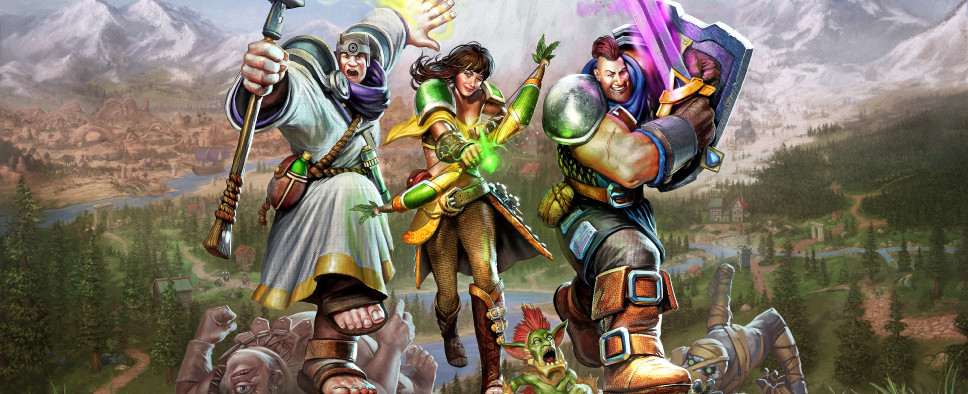Champions of Anteria Previews
-
Category: News ArchiveHits: 1481

With Ubisoft and Blue Byte's Champions of Anteria edging closer to its release next month, a handful of outlets have been given the opportunity to spend some hands-on time with the strategy/RPG crossbreed, and that's resulted in some new previews for us to read through.
GamePressure:
It may seem a bit strange, as the new production from Blue Byte has come a long way and it certainly wasn't paved with roses. Champions of Anteria started out as the next entry in the aforementioned Settlers franchise, subtitled Kingdoms of Anteria. Not everything worked out with the project, however – the title was cancelled and what was left of it was used to make Champions, a game which, in terms of gameplay, lands far off the classic strategic premise focused on development of a settlement. First and foremost, this game is an RPG, and the elements characteristic of Settlers-like games are featured only as a supplement.
The main axis of the game revolves around the heroes; for each skirmish we can choose as few as three of them, each representing one of the elements. We plan our actions on a straighforward world map that clearly shows the extent of our influence in the world of Anteria. The player's task is to conquer subsequent lands, taking over more and more territory – we achieve this through a variety of missions and – mainly – clashes with enemy forces. Our main objective is to capture the capital of a given region, but before we can do that, it will be necessary not only to gain authority over individual provinces, but also to keep them in our possession – from time to time our opponents will try to recapture their former properties, launching attacks on our defensive positions or fortifications. Nothing can be taken for granted in the world of Champions of Anteria – hegemony must be constantly reaffirmed in combat.
Combat is where Champions of Anteria aims for slightly more tactical finesse than the stat-based hack and slash aRPGs with which it shares a camera angle. Every champion and foe is defined by one of five elements, which have a circular hierarchy of dominance. Fire beats Metal, which beats Nature, which beats Lightning, which beats Water, which, in turn, beats Fire. If your fighter, Vargus (Metal) goes up against a Nature-affiliated enemy, he’s going to be doing critical attacks all day long and taking very little damage in return. Conversely, if he’s attacked by a Fire creature, he’s going to be in trouble. Melty trouble.
To prevent the game just devolving into lining up your champions with the correct elemental foe, each character has a mixture of cooldown abilities which aren’t always linked to their main element. Nusala, for instance, is a Nature champion with a bow. But each shot she takes ‘marks’ an enemy with an arrowhead (up to three), which can then be detonated for Fire damage. Brother Anslem, a Lightning monk, has an ability that will turn a given target’s elemental to Lightning for a period of time, potentially negating it as a threat.
And GameWatcher:
The difficulty of the game is on point and not being tactical and using the elements wheel to your advantage will mean a swift death. Heroes have a good selection of abilities and many can be unlocked as you progress. These abilities have a wide range of uses but most importantly is that each hero can have their own unique combat styles that are directly tied to abilities. The monk for example has to use normal attacks to charge up for his lighting based abilities.
The most difficult encounters often will involve the various bosses you’ll come across. Bosses will have their own set of mechanics to overcome. Ignoring boss fights or focusing elsewhere on the world map can lead to consequences, although taking these tough challenges on can gain you rewards.

